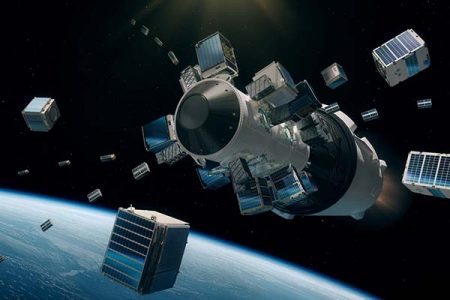
The smallsat market will experience robust growth over the next decade, projecting a market value of $113.3bn, according to the latest edition of Novaspace’s Prospects for the Small Satellite Market market intelligence report. This expansion will be fueled by the replenishment of satellite constellations globally and the rising complexity and cost of government-driven single-satellite missions.
Discussing the findings, Alexandre Najjar, lead analyst for the report said: “The smallsat market remains primarily driven by constellations, a highly opportunistic but challenging segment. While numerous new constellations are in development, many are expected to face scope reductions or consolidation due to inflationary pressures and intense competition, which jeopardise their long-term viability.”
Despite these headwinds, the report emphasises the strategic role of smallsat constellations in capability-building for emerging players in the space sector. Recent geopolitical tensions and conflicts have underscored the critical importance of commercial satellite communication (satcom) and Earth observation constellations. These systems have demonstrated their value in active combat scenarios, while interest grows in new technologies such as direct-to-device (D2D) and low Earth orbit positioning, navigation, and timing (LEO PNT) constellations.
The report also highlights an increasing trend toward regional demand retention and vertical integration, particularly among emerging countries. These nations and operators are not only acquiring smallsat systems but are also investing in domestic manufacturing and launch capabilities, effectively reducing export opportunities for commercial players. As a result, the addressable market for many commercial smallsat companies will become more constrained, with long-term government contracts serving as a key growth driver.
The smallsat industry continues to demonstrate resilience despite supply chain challenges, and inflationary pressures, and the exclusion of Starlink and Starshield from the report’s scope. With increasing investments from defence agencies, strong demand from Asia, and the strategic importance of smallsat systems highlighted by global geopolitical tensions, the market remains dynamic. As government contracts and new commercial entrants drive growth, the smallsat sector is poised to play a pivotal role in shaping the future of space-based capabilities worldwide.
Novaspace’s Prospects for the Small Satellite Market report, now in its 10th edition, provides a detailed analysis of the trends shaping the smallsat industry. It examines five mass categories, six regions, seven satellite applications, five manufacturer types, and four operator categories, offering insights into market drivers and challenges.
This edition excludes Starlink from its projections, delivering unbiased data and clearer industry forecasts. It is designed for smallsat manufacturers, government agencies, investors, and other stakeholders. The report offers forecasts for satellites under 500 kg over the next 10 years, breaking down market value, units, and mass by application, region, orbit, and operator type.












Add Comment